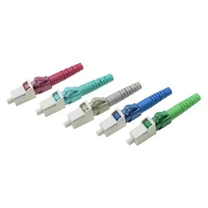Fiber optic transceiver is a kind of Ethernet transmission media conversion unit that interchanges short-distance twisted pair electrical signals and long-distance optical signals, which is also called photoelectric converter in many places. Enterprises in the information technology infrastructure, usually more attention to routers, switches and even network cards and other network equipment used for node data exchange, but often ignore the media conversion of this non-network core but essential equipment. Especially in some government agencies and enterprises that require high degree of informationization and large data traffic, the network construction needs to be directly connected to the backbone network with optical fiber as the transmission medium, while the transmission medium of the enterprise internal LAN is generally copper wire, ensuring the smooth transmission of data packets between different networks media conversion equipment has become a necessity.
In order to ensure full compatibility with other manufacturers' network equipment such as NICs, repeaters, hubs and switches, fiber optic transceiver products must strictly comply with IEEE802.3 Ethernet standard, in addition to EMC anti-electromagnetic radiation should meet the relevant provisions of FCC and CE, such as Phoenix Networks fiber optic transceiver has passed CE certification. Nowadays, as major domestic operators are vigorously building cell networks, campus networks and enterprise networks, the amount of fiber optic transceiver products is also increasing to better meet the construction needs of access networks.
With the rapid progress of information technology construction, people's demand for data, voice, image and other multimedia communications is increasingly strong, Ethernet broadband access is therefore mentioned in an increasingly important position. However, the traditional Category 5 cable can only transmit Ethernet signals up to 100 meters, which can no longer meet the needs of the actual network environment in terms of transmission distance and coverage. At the same time, fiber optic transceivers are widely used in large networks such as wide area networks for their advantages of large information capacity, good confidentiality, light weight, small size, no relay, and long transmission distance.






